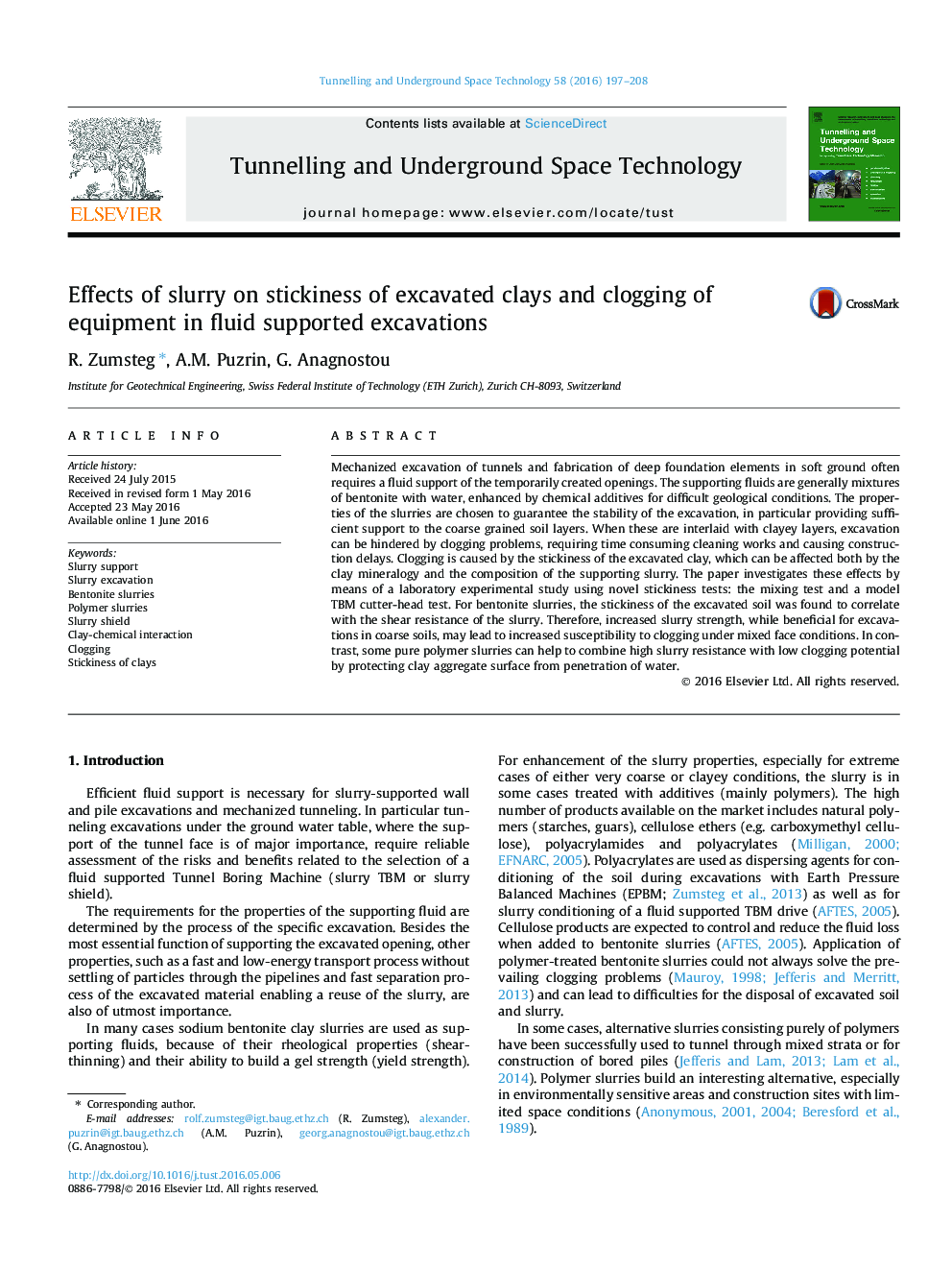| Article ID | Journal | Published Year | Pages | File Type |
|---|---|---|---|---|
| 311819 | Tunnelling and Underground Space Technology | 2016 | 12 Pages |
•Slurry composition has a decisive influence on clogging in fluid supported excavations.•Laboratory results of mixing test and model TBM cutter-head tests are presented.•Increased slurry strength may lead to increased clogging of tunnel boring machines.•Pure polymer slurries can combine high slurry resistance with low clogging potential.
Mechanized excavation of tunnels and fabrication of deep foundation elements in soft ground often requires a fluid support of the temporarily created openings. The supporting fluids are generally mixtures of bentonite with water, enhanced by chemical additives for difficult geological conditions. The properties of the slurries are chosen to guarantee the stability of the excavation, in particular providing sufficient support to the coarse grained soil layers. When these are interlaid with clayey layers, excavation can be hindered by clogging problems, requiring time consuming cleaning works and causing construction delays. Clogging is caused by the stickiness of the excavated clay, which can be affected both by the clay mineralogy and the composition of the supporting slurry. The paper investigates these effects by means of a laboratory experimental study using novel stickiness tests: the mixing test and a model TBM cutter-head test. For bentonite slurries, the stickiness of the excavated soil was found to correlate with the shear resistance of the slurry. Therefore, increased slurry strength, while beneficial for excavations in coarse soils, may lead to increased susceptibility to clogging under mixed face conditions. In contrast, some pure polymer slurries can help to combine high slurry resistance with low clogging potential by protecting clay aggregate surface from penetration of water.
Graphical abstractFigure optionsDownload full-size imageDownload as PowerPoint slide
